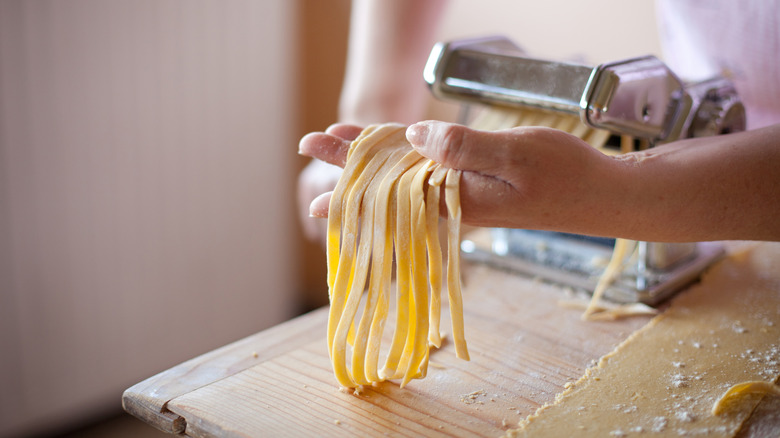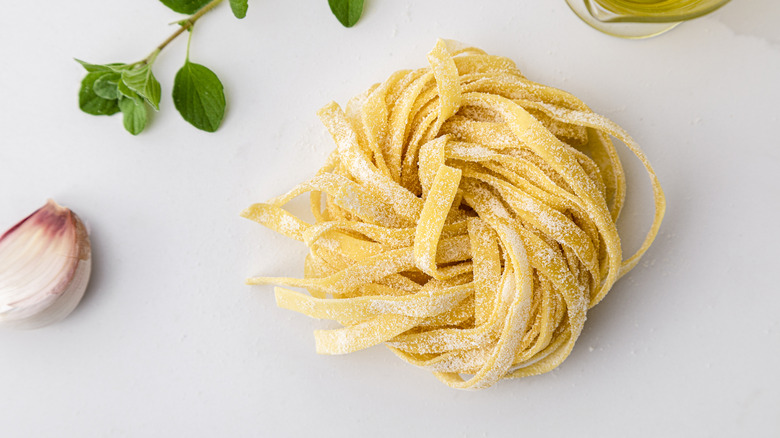The Right Way To Store Fresh Pasta
Fresh pasta is a double-edged sword. It is a relatively quick way to win the sense of achievement that comes from making something from scratch with your own two hands. It is also the rare item that you can create right at home and enjoy at its immediate peak. And it is actually more noticeably delicious than most store-bought "fresh" varieties. But, although you can make some fresh pasta varieties with just two ingredients, it can also be a pain to prepare (so much cranking!). All that flour makes a mess, and it sure doesn't stay so fresh forever. To really get the most out of all that hard work and extend your enjoyment of the fruits of your labor, you have to store fresh pasta the right way.
Your beautiful noods will begin drying out the moment they transform from dough blob to magnificent strands of spaghetti, fettuccine, and linguine, so you'll need a storage plan right away. Refrigeration is best if you want to finish fresh pasta within a couple of days. You needn't do much more than transfer the pasta into any old resealable container in this case, but don't get overly ambitious: You'll have to toss it as day three rolls around. Freezing buys you more time, as it usually does. Plastic-bagged or otherwise sealed portions can stay frozen for months. There's also a third, somewhat common storing path that is best avoided.
Restoring your stored pasta's fresh-made glory
When you're ready to finish refrigerated fresh pasta, you needn't do much more than boil it for a couple of minutes, as it cooks much quicker than the dried stuff in any state. When freezing, we like to twirl our noodles into uniform bundles of about 2 ounces a piece and let them stiffen on a parchment paper-lined baking sheet before removing to a longer term storage vessel. Similar to our greens-freezing method, this just keeps all the pasta from clumping together, plus it saves space. When you're ready, it also allows you to extract exactly as much as you wish. And, guess what, frozen-fresh pasta cooks quickly, too, so check for doneness after about two minutes.
Now, about that third pasta storing practice. Some prefer to dry their freshly made pasta, but this is not our recommended direction. Fresh pasta and dried pasta are simply different foodstuffs, with different use cases. Fresh is dainty, intended for lighter sauces. Dried is hearty, able to stand up to your real Sunday gravies. Drying fresh pasta also just takes up more space, as you need to hang strands individually and with enough space between them to prevent sticking. Noodles saved this way just don't perform as well as refrigerated or frozen, either, not to mention you could have just bought a box to begin with and saved yourself the trouble for a so-so result. Keep cool, instead, to preserve that precious fresh pasta.

